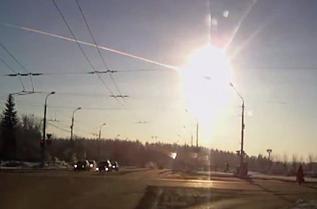Acts & Facts is the monthly  publication of the Institute for Creation Research, which equips “believers with evidence of the Bible’s accuracy and authority through scientific research…”
publication of the Institute for Creation Research, which equips “believers with evidence of the Bible’s accuracy and authority through scientific research…”
Here at NCSE, we maintain a subscription to Acts & Facts to remain informed of the ICR’s stance on various topics and as a reminder of what we face in defending science education. The May 2014 issue has an article by Dr. Jason Lisle—ICR's Director of Research—that is a case study in avoiding worry and shirking responsibility by donning blinders in adopting a human-centric view of the universe.
(N.B. Blinders are those bridle attachments on racehorses to keep them from looking to the side and becoming distracted or ‘spooked.’ The Aussies call them pacifiers. )
Dr. Lisle has been contributing a series of articles to A&F on the solar system. He is well qualified as he has a doctorate in astrophysics from the University of Colorado. The articles have been quite well written and very informative.
His May article, “The Solar System: Asteroids and Comets,” started well—until he played down the threats posed by asteroids. Initially I wondered whether he merely wished to protect the readers from thoughts about random carnage, or whether his beliefs provide him with blinders that prevent his acknowledging the magnitude of this threat.
How would Dr. Lisle respond to the question of asteroids colliding with Earth? He himself poses that question:
It may seem at first that with so many Earth-crossing asteroids, a devastating collision would be inevitable. But, the asteroids do not orbit in exactly the same plane as the Earth’s. In most cases, their orbits never actually intersect, and therefore they can never collide. There are only a handful of known, relatively large Earth-crossers that pose potential danger for collision in the distant future. However, astronomers can accurately compute the future positions of these asteroids and have determined that none pose any realistic threat in our lifetime. A number of smaller Earth-crossing asteroids may yet be discovered. But smaller asteroids would cause less damage upon impact, and the smallest ones burn up in Earth’s protective atmosphere before they can reach the surface.
There is a lot of latent honesty in that paragraph.
- “There are only a handful of known, relatively large Earth-crossers that pose potential danger.…” Uh, what about the unknown large Earth-crossers? The Sentinel Project of the B612 Foundation will likely locate bunches more.
- “… none pose any realistic threat in our lifetime.” OK, what about a little further into the future? I do not believe we should shirk our responsibilities to coming generations simply because we will not be around.
- “But smaller asteroids would cause less damage upon impact….” OK, what about the Chelyabinsk meteor, a tiny—about 20 meters across—asteroid that was not known? Had it approached that city from directly overhead, instead of at the shallow angle of around eighteen degrees, it would likely have destroyed Chelyabinsk and most of the million people living there. Instead, it released its energy—20-30 times more powerful than the Hiroshima atomic bomb—about 30 km above the city and damaged only 7,000 buildings and sent only a thousand or so people to seek medical treatment, some from ultraviolet skin burns. Dr. Lisle’s “relatively large Earth-crossers” presumably could wipe out entire population centers—or worse.
Dr. Lisle then turns to the topic of comets. Good reading, at least until he again dons his blinders and writes:
Both short- and long-period comets are a confirmation that God created them thousands of years ago, not millions or billions. Comets lose mass every time they pass through the inner solar system. We can estimate the mass loss from observations of the comet’s tail. Based on this rate, and the mass of the nucleus, a typical comet can last no more than about 100,000 years.
Credit Dr. Lisle with saying 100,000 years and not just the young earth creationist 6,000 to 10,000 years. And he did say “typical.” Without his blinders, he surely would be aware of atypical comets such as C/1980 E1. It had an orbital period of about 7.1 million years before its most recent inner-Solar-System excursion when it picked up additional velocity from a close pass with Jupiter. It is now on a course to exit the Solar System altogether (a situation that he mentions in the article).
Dr. Lisle’s perspective is narrowest in the final sentence of his article, “Who can guess what undiscovered gems the Lord has placed among the stars for our delight and His glory?”
“... for our delight"?!? Apparently Dr. Lisle believes that the universe was made for humans and, of course, that means that asteroids and comets cannot be a threat—at least with his blinders, a.k.a. pacifiers, properly in place.
